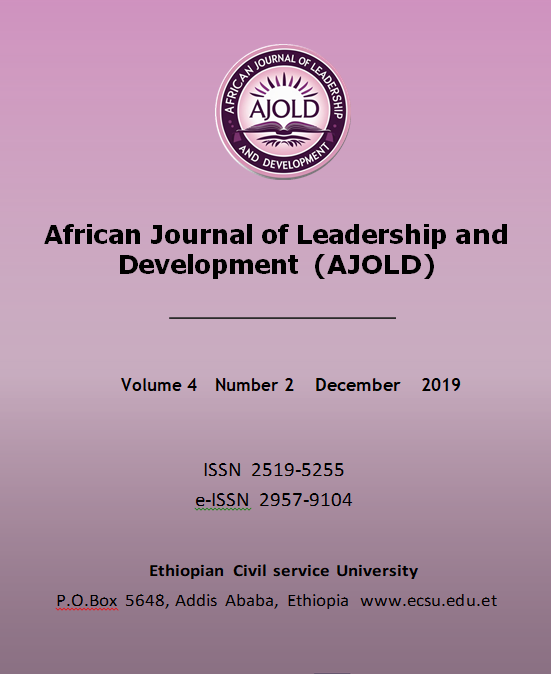Work Life Balance and Its Effects on Employees Performance in selected Public Institutions at Federal Government of Ethiopia
DOI:
https://doi.org/10.63990/2019ajoldvol4iss2pp1-15Keywords:
Work Life Balance, Public Institution, Employees performance, Work life balance policies, ProgramsAbstract
Work life (WL) imbalance is common in different organizations as a result of which the work place is characterized by stress, lack of employees’ commitment, job dissatisfaction and over all dissatisfaction which leads to absenteeism, turnover and reduced performance coupled with lack of ownership and reluctance to serve customers. The major objective of this study is assessing work life balance (WLB) practices and its effects on employees’ performance in selected public institutions of federal government of Ethiopia. To this end raised and answered basic research questions that include, to what extent does WLB is practiced in the selected public institutions? What is the effect of WLB practices on employees’ performance? And what are the challenges of WLB and the possible recommendations for improvement in the selected public institution? The study used mixed research approach with descriptive and explanatory research designs. Primary data was collected from sample of 400 employees who are selected by using systematic random sampling technique from six public institutions (which are selected purposively). Proportionate stratified sampling was used to categorize the selected public institutions in to strata. Questionnaires and key informants interview and focused group discussion (FGD) were employed to collect the primary data. Accordingly the study found out that work roles interfere with other roles; lack of WLB policies and programs, employees are stressful and dissatisfied with their work and existence of gap in employees’ performance though customers were responded as they are satisfied with institutions service. It is found out that, WLB has perfect and positive relationship with employees’ performance. Study also revealed out that WLB practice statistically significant effect on employee performance. So, WLB is worth noting concept which has multiplier effects on human aspects of the organizations. As a result, considering WLB in human resource management system of public institution is paramount. Recognizing employees’ role out of work, creating awareness about WLB, modifying contents and contexts of job, developing WLB policies and programs, making adjustment on salary scale and focusing on equal payment for equal jobs are some recommendations forwarded.
Downloads
Published
How to Cite
Issue
Section
License
This work is licensed under a Creative Commons Attribution-NonCommercial 4.0 International License






